
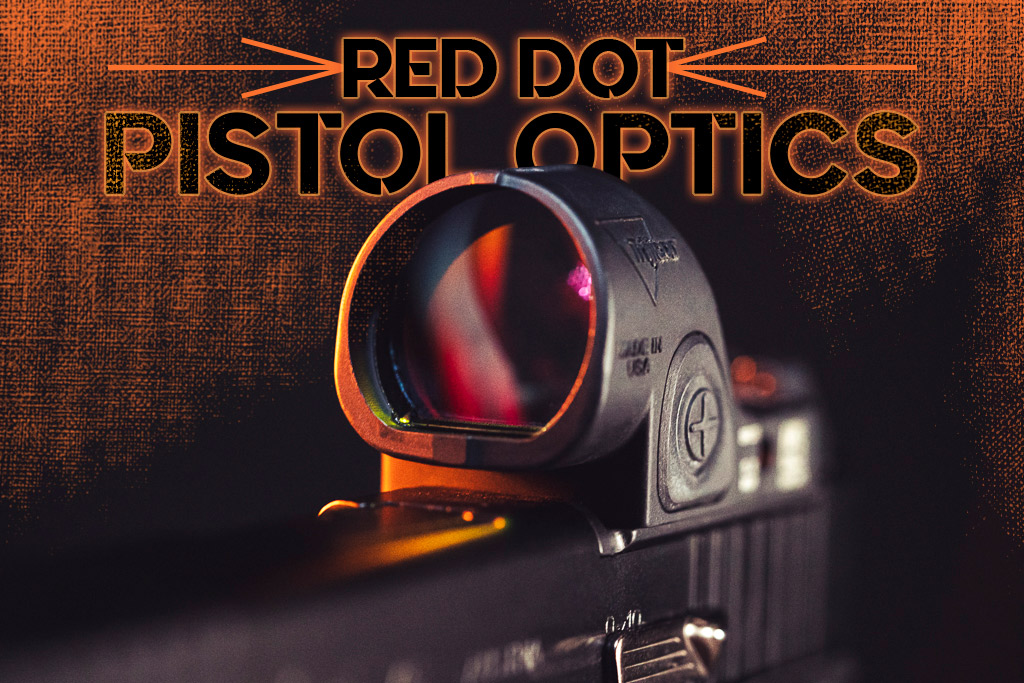
Over the past few years, pistol red dot sights have evolved from niche (and weird) add-ons to near-essential components for many pistol owners. What began as an accessory reserved for specialized shooters is now finding its way onto more handguns. They appeal to both seasoned experts and new gun owners, especially for concealed carry and personal protection.
As with so many techy gadgets, pistol optics are changing rapidly. Manufacturers are improving durability, reducing profile sizes, and increasing battery efficiency and longevity. For many gun owners, red dot sights have transformed how they shoot, allowing for quicker target acquisition and better accuracy.
Why Use A Pistol Red Dot?
The fundamental purpose of a red dot sight is to eliminate the need to line up multiple points of reference—the front and rear sight. Instead, you simply need to place the dot over the target and pull the trigger, which can lead to faster target acquisition and more precise shots. Of course, that assumes you’ve properly zeroed the red dot—a topic for another article.
As a pistol instructor, I see many new shooters who struggle with sight alignment for various reasons. While I still want gun owners to be familiar with using standard sights, sometimes I recommend a red dot to someone having difficulty with traditional aiming. Once they master sights, they move on to a red dot. However, if they can’t master sights, I’d rather have them equipped and able to aim with a red dot than struggle to hit their target, especially in a defensive scenario.
Red dot sights benefit those (like me) with aging eyes, reducing the need for near-to-far focal shifts that iron sights require. I have a red dot on my EDC gun for this very reason.
Remember when your pistol instructor showed you how you can only focus on one sight at a time and that you need to line up the sights and check your front sight before pulling the trigger? With a red dot, you only have one dot to focus on rather than tripping out your eyes by trying vainly to see both front and rear sight simultaneously. You can’t do it. With a red dot, the aiming process’s simplicity benefits older shooters and those who may be new to shooting because it’s easier to use.
How Did The Pistol Red Dot Develop?
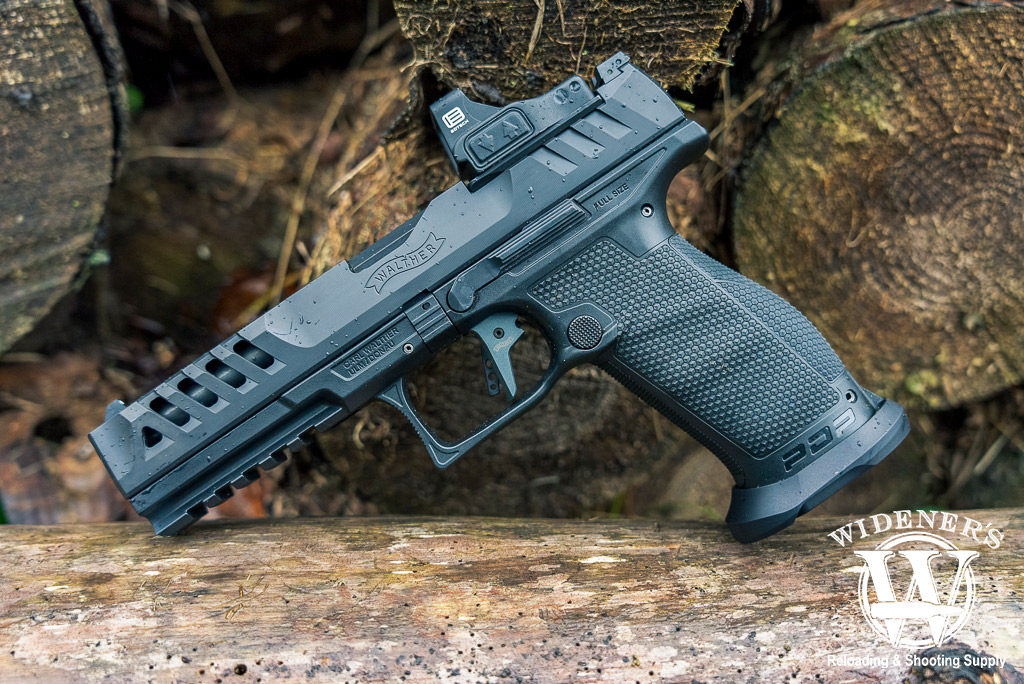
The modern pistol red dot optic evolved from non-electronic reflector, and reflex sights designed in the early 1900’s.
Let’s take a quick look at the evolution of red dots, starting way back in the mid-1970s, when early versions were developed primarily for rifle shooters who needed more precise long-distance targeting. At first, red dots were only for rifles, mainly because they were big and bulky and perceived as a tool for snipers and other distance shooters. It wasn’t until the late 1980s and early 1990s that optics manufacturers began producing pistol-sized red dots. Early versions of pistol-mounted red dots were bulky and primarily used by competitive shooters looking for faster follow-up shots.
Soon, concealed carriers wondered if they could benefit from a red dot. As demand grew, so did innovation. Smaller, more reliable red dots were developed to withstand a pistol’s recoil, leading to a surge. Today, red dots are mainstream and accepted by both professionals and the rest of us.
Common Features
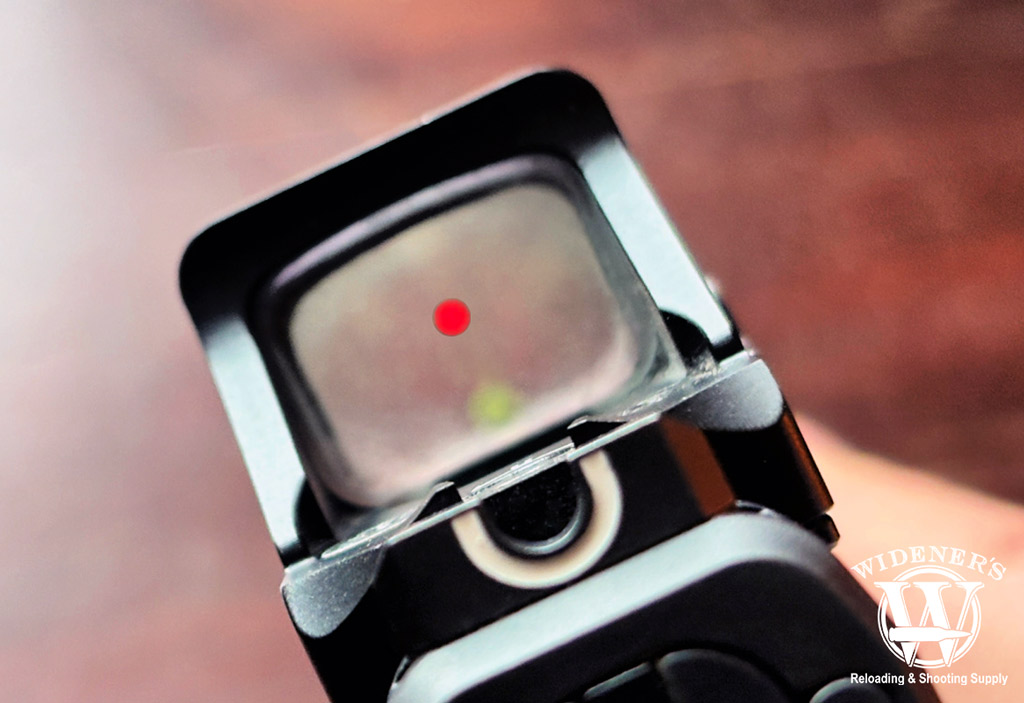
A pistol red dot optic has an LED emitter that projects a round dot onto a tilted lens, which reflects the shape to the shooter’s eye.
Modern red dot sights for pistols share a few common features designed to make them durable, accurate, and adaptable to various applications and shooter needs. Pistol red dots are generally compact, made with aluminum or other lightweight materials, and built to handle repeated recoil shocks. A typical red dot sight has an LED that projects a reticle, usually a simple dot, onto a lens.
The brightness of the reticle is often adjustable to accommodate various lighting conditions. Red dots typically come with a range of brightness settings, and some models feature automatic brightness adjustments based on ambient light. Battery life has also significantly improved, with many models now lasting thousands of hours on a single battery. Durability has also become a key feature, as many red dots are rated as waterproof or weather-resistant. Many manufacturers focus on creating scratch-resistant, anti-reflective lenses for clarity and reliability.
Most red dots come with easy-to-access controls, usually on the optic’s side or top. These controls allow users to turn the sight on or off, adjust brightness, and sometimes swap between reticle styles.
Popular Types: Pistol Red Dots
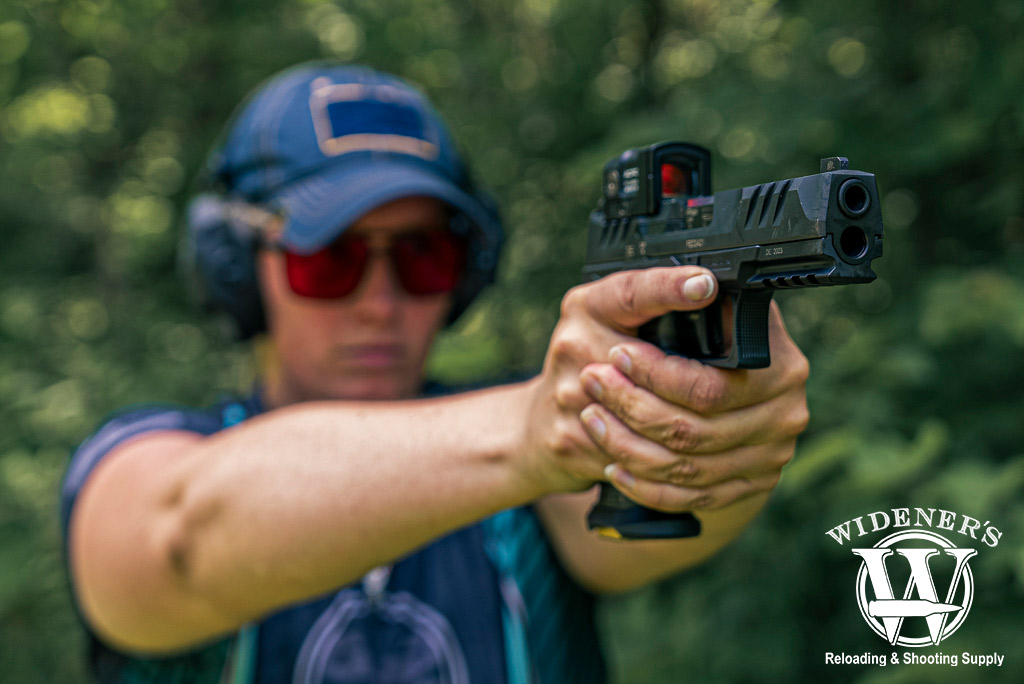
A closed emitter red dot optic encases the LED between two lenses, protecting it from environmental factors.
Red dot sights generally fall into two main categories: open emitter and closed emitter. Each has advantages and limitations, depending on the user’s environment and intended use.
Open emitter red dots are the most common type and consist of a single lens where the LED projects the dot. These sights are usually smaller, lighter, and often less expensive, making them suitable for concealed carry and everyday use. However, open emitters are vulnerable to debris and moisture, as there is no protective cover on the exposed side of the lens.
Closed emitter red dots encase the LED between two lenses, making the dot more resilient to environmental factors such as dust, rain, and fog. Thus, closed emitter sights are ideal for harsh or unpredictable environments.
However, these sights are generally bulkier and more expensive, so you must justify the expense if you’ll shell out the dough for one. Closed emitter optics are more popular among law enforcement and military personnel who require extra durability in all weather conditions and have bigger budgets.
Slide Mounted vs. Frame Mounted Pistol Red Dot
There are two primary ways to mount a red dot on a pistol: slide-mounted or frame-mounted. Both options have pros and cons.
Slide-mounted red dots are mounted directly on the pistol’s slide, usually through cut-out or pre-drilled holes in an optics-ready slide. Due to its simplicity, mounting the sight directly to the slide is popular in the civilian market, making it ideal for concealed carry or home defense. However, slide-mounted red dots experience more wear and tear as they absorb the full force of recoil with every shot. This can sometimes lead to shorter battery life or faster wear on the optic’s internals, especially if not designed for heavy use.
Far less popular, frame-mounted red dots are affixed to the gun’s frame, typically with a rail mount. Frame-mounted optics avoid the constant recoil impact, allowing the red dot to maintain zero more effectively over time. They’re also generally easier to track during rapid fire since they don’t move with the slide. However, frame mounts are often bulkier and less suited for concealed carry, making them more popular in competitive shooting or with shooters using pistols with larger frames.
Who Uses Red Dots?
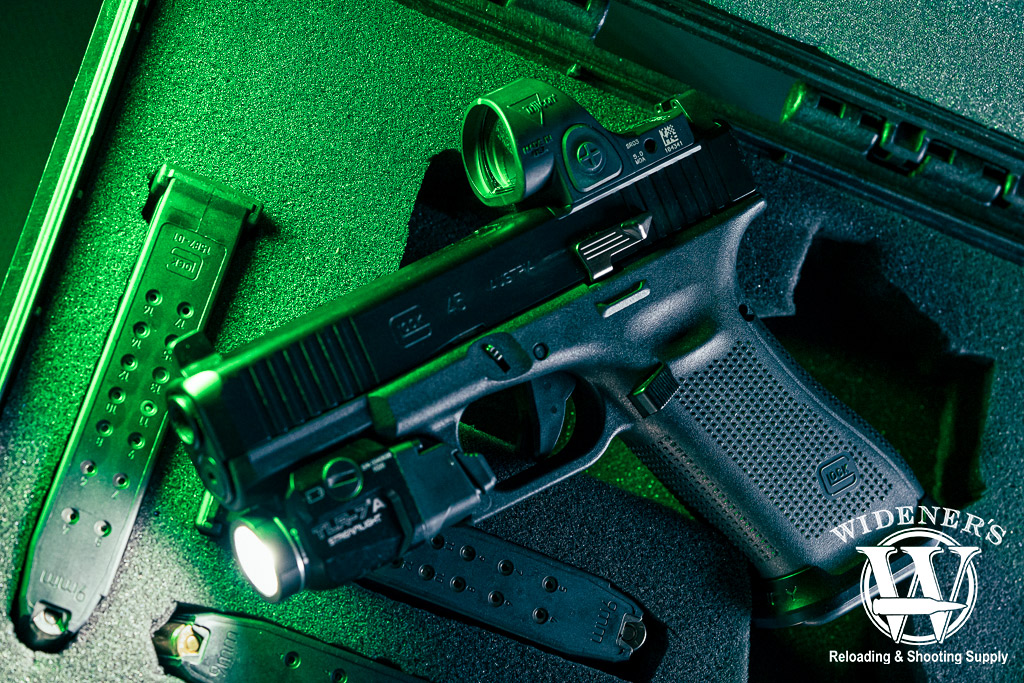
Competitive shooters, law enforcement, military personnel, and civilians all benefit from the advantages of red dot optics.
Red dots offer clear benefits across various use cases but are particularly advantageous for users in specific situations or roles. Concealed carriers benefit from red dots because they improve target acquisition speed and accuracy, especially in high-stress situations. However, they may prefer low-profile, open-emitter pistol red dots that are less likely to snag during a draw from a cover garment or add significant weight to the gun.
Competitive shooters often rely on frame-mounted red dots, which help them achieve rapid, precise shots. Red dots allow them to maintain sight on the target while firing consecutive shots, making them invaluable in competition settings where fractions of seconds count.
Red dots are also gaining popularity among beginner shooters. Their simplified aiming process can make them less intimidating and more approachable for those learning to shoot. Instructors often recommend red dots to students who struggle with traditional iron sights, as they reduce the learning curve and promote better fundamentals.
Red Dot Optic Recommendations
The right red dot sight depends heavily on the shooter’s needs, lifestyle, and budget. For concealed carry pistol red dot, consider the following:
- Holosun 507K
- Trijicon RMRcc
- Shield RMSc
These models offer compact, durable designs that are easy to conceal and provide a bright, clear dot. Each of these sights offers reliability and low-profile features that won’t weigh down a carry gun.
For those who need an optic that can withstand rough environments, consider the following closed emitter pistol red dots:
- Aimpoint ACRO P-2
- Holosun EPS
- Steiner MPS
These models are robust choices. These sights have enclosed emitters that resist dirt, water, and debris. Though slightly larger and bulkier, they provide the durability needed in high-stakes environments.
Competitive shooters may prefer models with a larger viewing window. For a competition pistol red dot, consider the following:
- Trijicon SRO
- Holosun 507 Comp
- Leupold DeltaPoint Pro
These optics offer larger lenses for an increased field of view, making target tracking easier during rapid-fire sequences. They also offer customizable reticle options that cater to individual preferences and competition rules.
Parting Shot
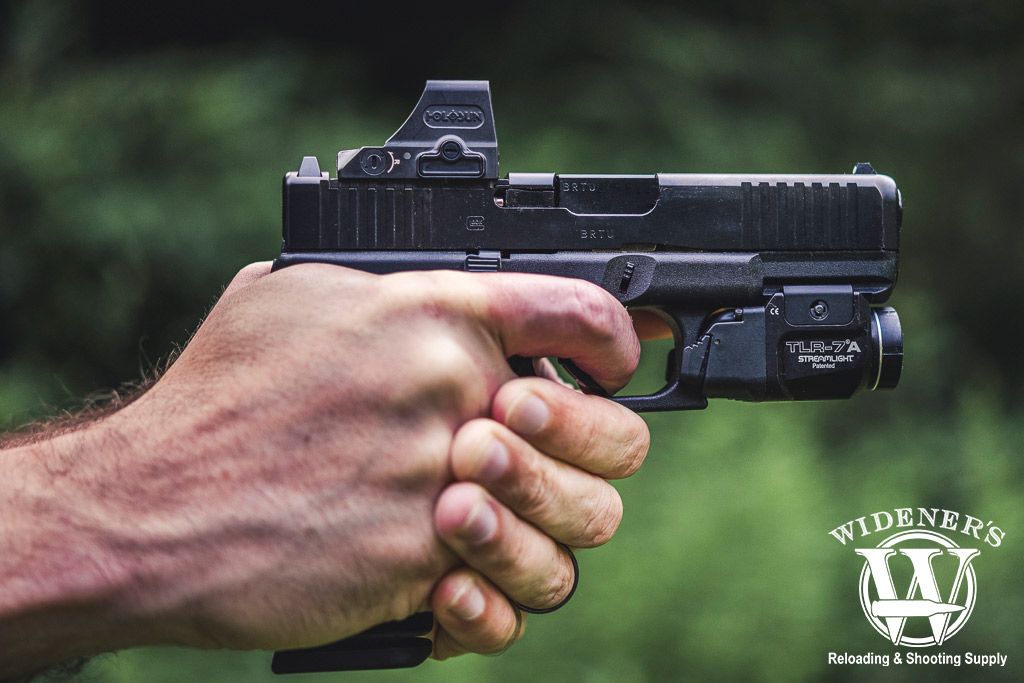
With the proper training, adding a red dot to your handgun can increase accuracy and speed up target acquisition.
Pistol red dots aren’t necessarily for everyone, but they can be game-changers for those who need quick target acquisition or have vision challenges. Pistol red dots have rapidly advanced from niche, competition-only accessories to widely adopted, high-performance tools for nearly every type of shooter. These optics offer benefits like improved speed, accuracy, and user-friendly designs and continue transforming how handguns are used in everyday life.


